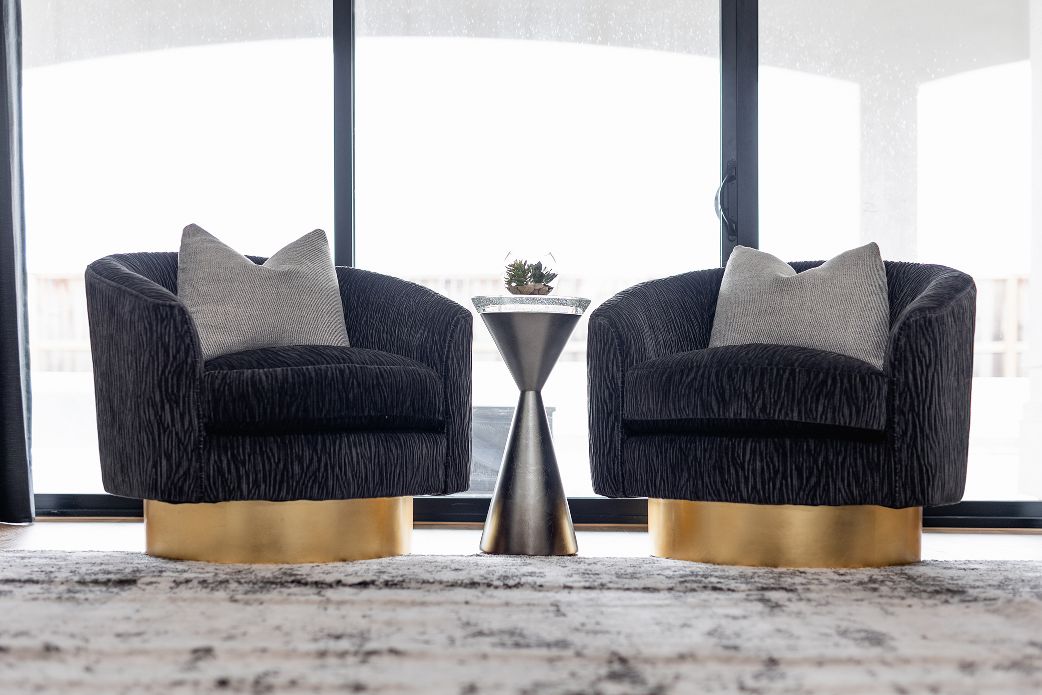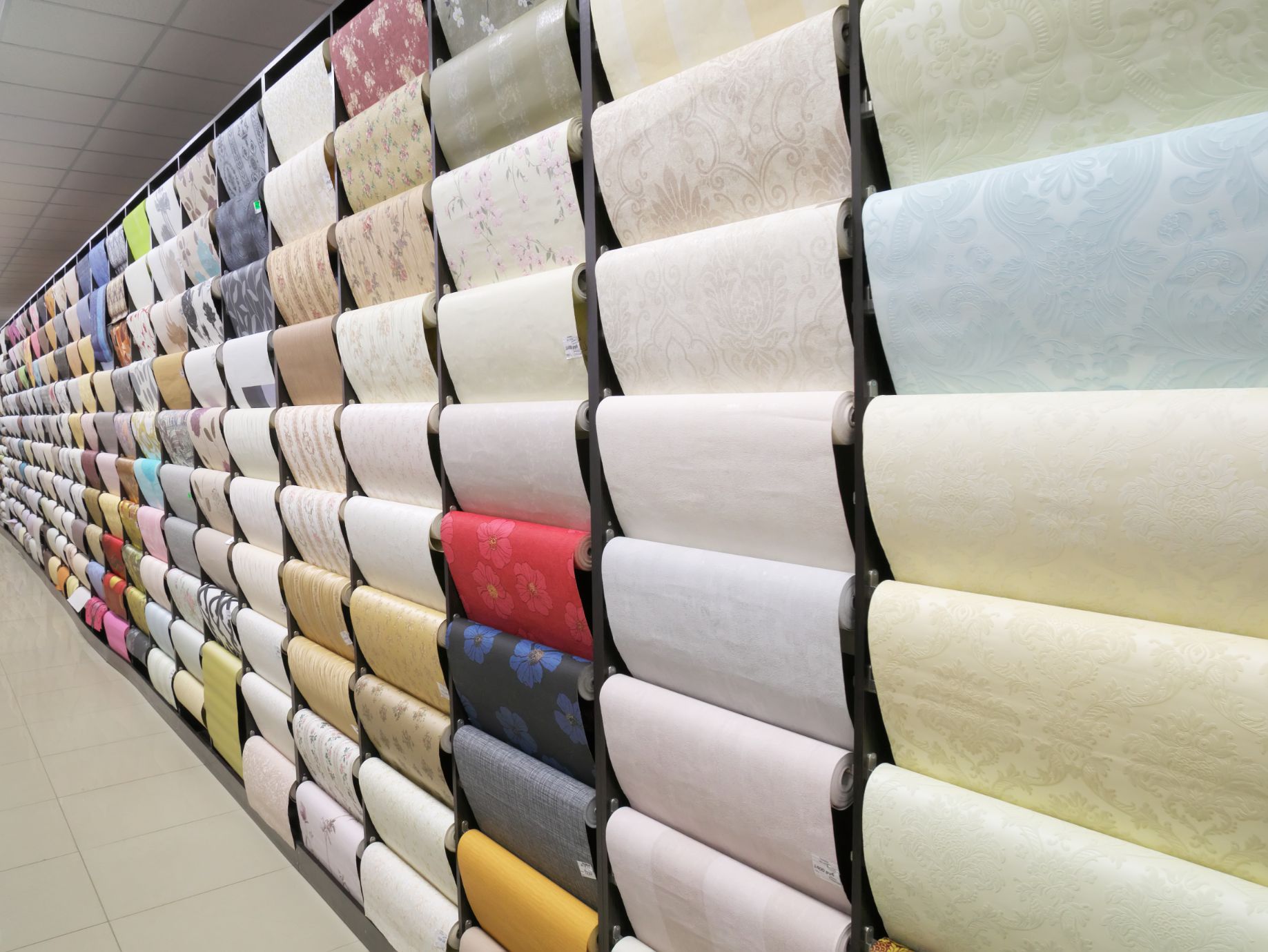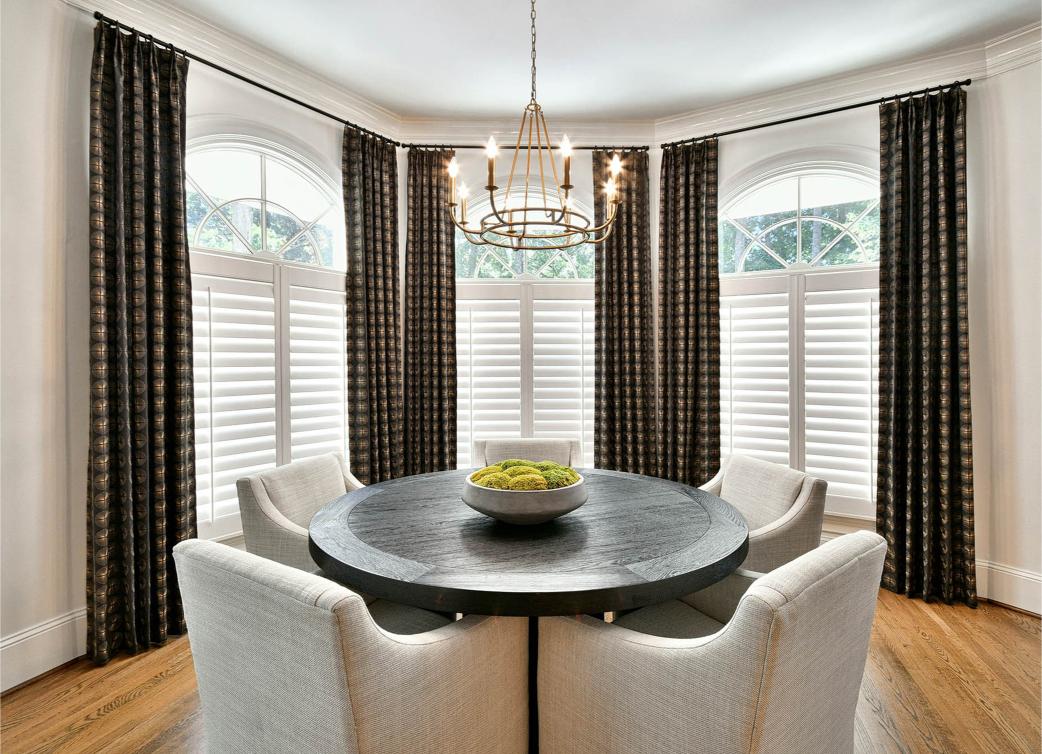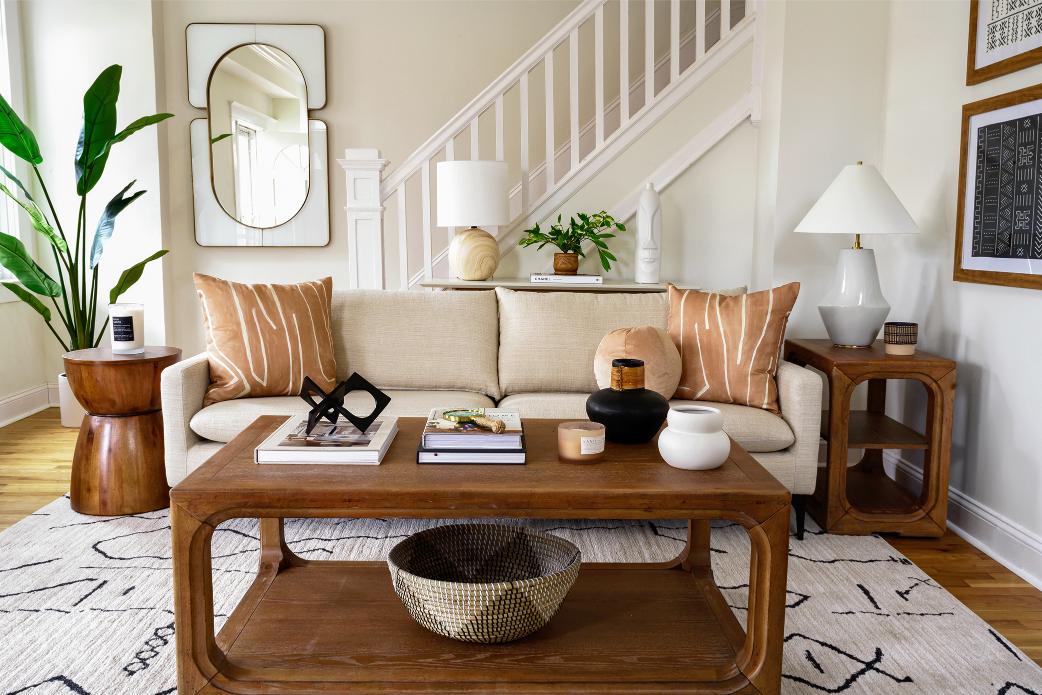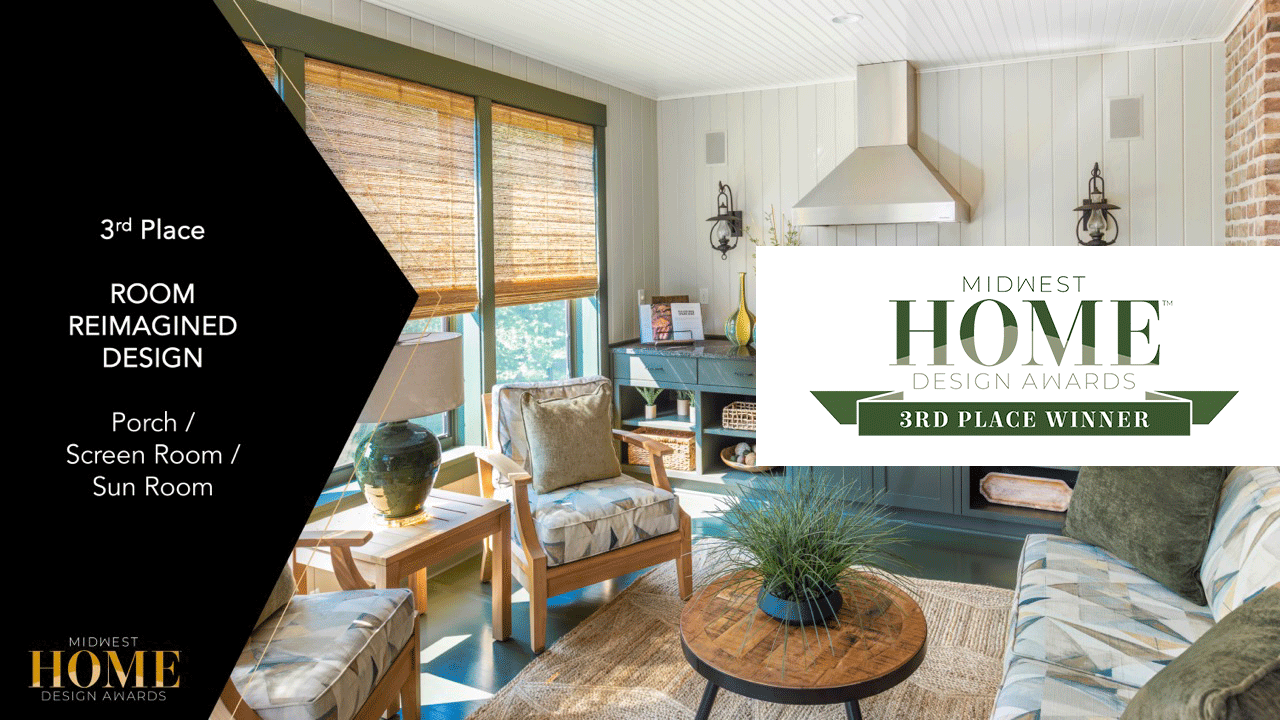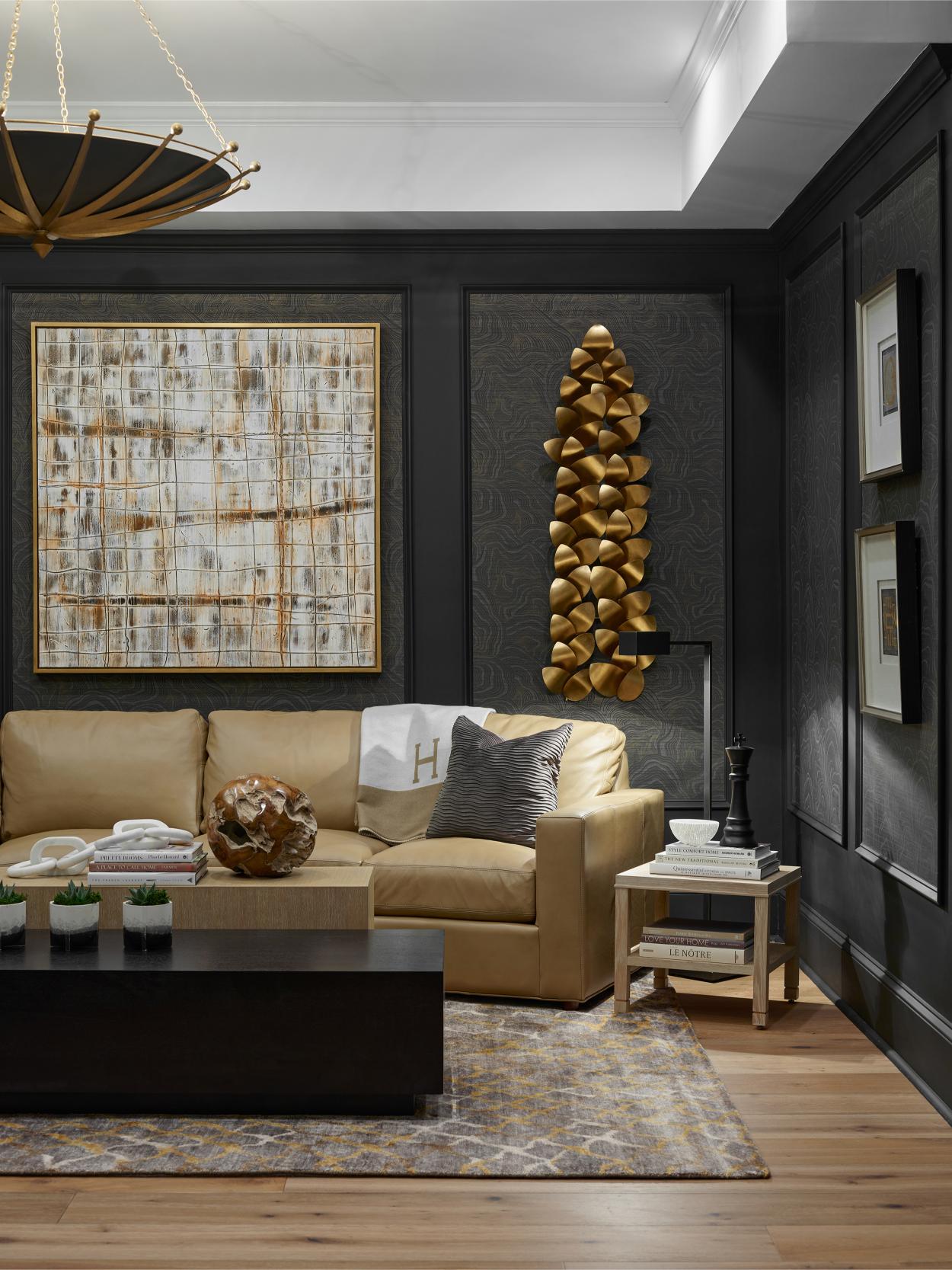Amidst the vivid palettes that often dominate interior spaces, black remains a defining hue of sophistication and depth.
It’s a shade that commands respect. Introducing black into a room is more than a design choice; it’s a deliberate stroke of boldness, bringing with it a sense of drama and elegance. In the right quantities and contexts, black’s versatile presence can transform an ordinary space into a striking tableau, echoing a timeless appeal that transcends passing trends.
In the world of fashion, the iconic little black dress worn by Audrey Hepburn in “Breakfast at Tiffany’s” represents the epitome of sophistication and grace. It has become a timeless symbol of elegance and style. Just as various James Bonds have defined black-tie attire, it sparks a debate on who wore it best, adding to its allure. However, the influence of the color black extends far beyond the realm of movie stars and their clothing. It has inspired artists, designers, and even homeowners in their choice of decor. Black is consistently at the threshold of design trends and holds multiple symbolic meanings, including virtue and wealth, sophistication, eroticism, mourning, and a touch of intrigue and mystery. Its versatility and timeless appeal make it a popular choice in interior design.
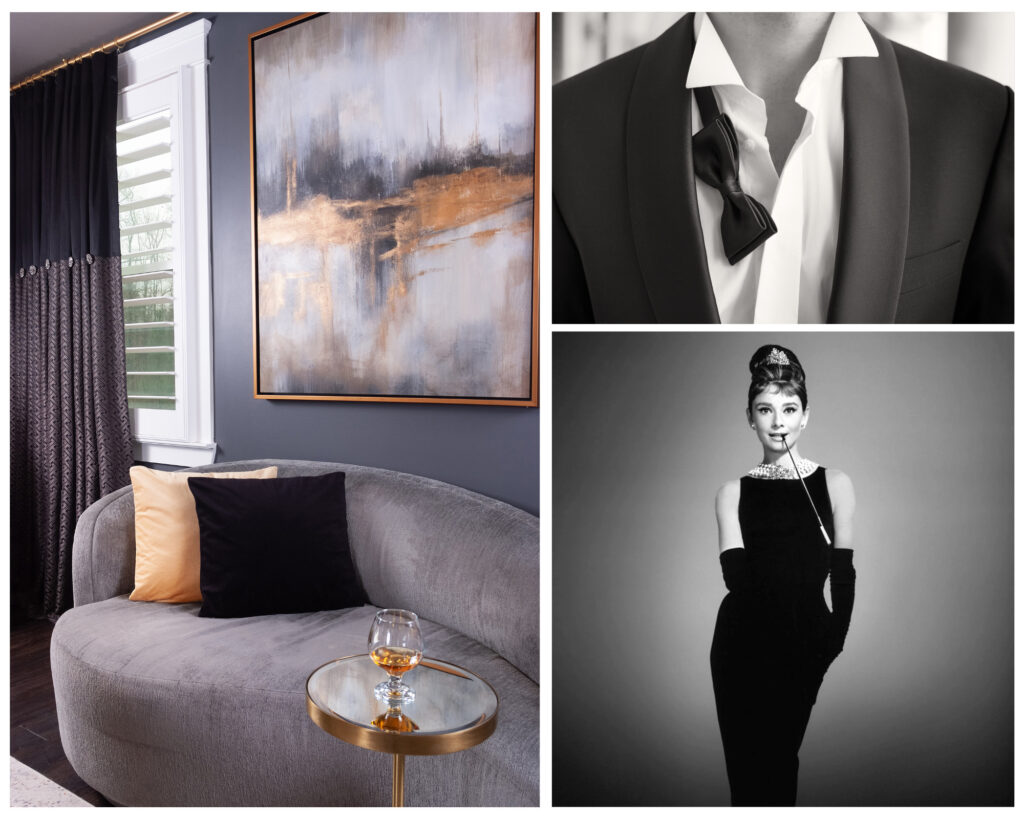
The Versatility of Black in Spaces
Black’s adaptability allows it to suit a wide spectrum of design aesthetics, from modern minimalism to classic opulence. As an anchor in palette selection, black grounds a room’s scheme while offering a canvas for other colors to stand vividly against.
In larger doses, black imbues spaces with a stately presence, establishing a commanding backdrop when used on walls or furniture. Conversely, as an accent, it punctuates with sleek precision, delineating contours and enhancing textural details, which otherwise might go unnoticed.
Accentuating with black accessories—a method both understated and bold—can yield a nuanced elegance that amplifies the sophistication of any interior.
Creating Contract and Focus
Black emanates sophistication—commandeering attention—drawing the observer’s gaze on specific design elements within an interior environment.
Black encapsulates the art of precision in design, framing spaces with intention, elevating the inherent value of every chosen object and texture.
By adeptly inserting black accents or features, interior designers magnify focal points, crafting an interplay of light and shadow—a dynamic visual narrative that engages and endures.
Incorporating black elements strategically can create a focal point—anchoring a room or object—thereby establishing hierarchy and guiding the viewer’s journey through the space.
Black as a Background Palette
Black is a versatile and striking choice for a background palette. It offers a bold canvas against which other elements can assertively contrast, creating a dramatic and immersive experience.
Employing black walls or surfaces as the foundation of an interior imparts an air of sophistication and depth rarely matched by other colors. It allows for textures to rise to prominence, and color pops vividly in this setting. Luxurious materials like velvet or leather look especially resplendent against black backgrounds, their rich textures made all the more sumptuous. In essence, black amplifies both the tangible and intangible attributes of adjacent design elements.
Furthermore, when black dominates the walls or floors, it evokes a sense of infinite space. The expansive quality of a dark backdrop can be capitalized on to draw the eye toward meticulously curated vignettes or art installations. These features become focal points that command attention, their presence accentuated against the depth of the black surroundings.
In contrast, as a background palette, black also serves to subdue and simplify. It fosters an environment where the interplay of light becomes the primary visual narrative. It can harmonize disparate elements into a cohesive whole, encouraging the onlooker to appreciate the textures and contours that might be overshadowed by a lighter or more varying background, effectively emphasizing select design elements without invoking visual chaos.
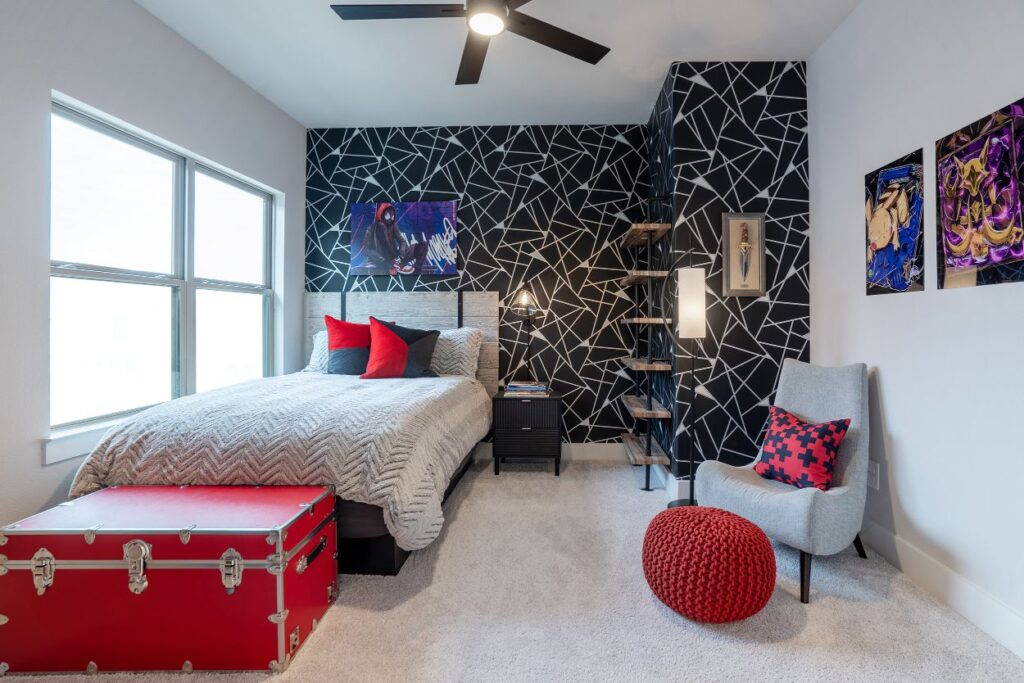
Selecting the Right Black Tone
Choosing the appropriate black tone is crucial to achieving the desired aesthetic and emotional impact. Like all colors, black has underlying hues that affect its visual temperature and compatibility with other design elements.
In selecting a black tone, one must consider the lighting conditions under which it will be displayed. Natural daylight, LED, or incandescent lighting can alter the perception of black—some casting a cooler tone, others warming it subtly. The chosen black must be tested in situ to ensure its integrity throughout various times of day and under different lighting scenarios.
The correct black tone can either lend a sense of sophistication or create an overwhelming heaviness. It’s pretty important to find a balance that complements the space’s existing features and the intended design narrative.
Understanding Undertones
Undertones are the key to black’s versatility.
Black, despite its simplicity, harbors complex undertones. These subtleties in hue can impart warmth or coolness to a space, influencing the ambiance profoundly. Recognizing the nuanced differences in undertones is crucial for a harmonious composition—an outcome that refines and enhances rather than contradicts the design intention. Correctly identified, undertones act as a silent symphony in the background of the visual plane.
Detect the undertone, and unlock the design’s potential.
A mistake in the undertone can disrupt harmony. When selecting fabrics, paints, and finishes in black, the undertone must align with the design’s overarching theme—a warm or cool palette. This alignment is especially paramount in monochromatic schemes where each element must be meticulously chosen for its complementary undertone.
Undertones play within a subtle spectrum of sophistication.
Through understanding and skillful application of undertones, interior designers and homeowners can achieve a level of elegance that stands the test of time. With the knowledge of undertones embedded in the decision-making process, the black selected for an interior in 2024 can assure that a space exudes an air of timeless sophistication that resonates with both the current and future home design trends.
Matte versus Glossy Finishes
The choice speaks volumes about style and intent.
When integrating black into an interior design scheme, one must consider the reflective nature of the materials used. Matte finishes absorb light, providing a velvety depth that can evoke a sense of quiet luxury and understated elegance. Conversely, glossy finishes reflect light, offering a dynamic, crisp appearance that can energize a space and impart a modern edge.
Each finish tells a different design story.
Selecting between matte and glossy black finishes is intrinsic to the ambiance you wish to create. Matte surfaces can soften the starkness of black, allowing it to seamlessly blend with various textures and colors. Glossy surfaces, on the other hand, tend to accentuate the boldness of black, amplifying its presence within a design.
A balance of finishes can harmonize a space.
Incorporating both matte and glossy black elements is a sophisticated approach that adds visual interest and depth. Strategically placed glossy accents can bring vitality to a predominantly matte environment – a dance of texture that guides the eye and enhances the spatial experience.
Understand the interplay of light to inform your selection.
With informed decisions grounded in an understanding of these finishes, interior designers and homeowners can curate spaces that reflect contemporary sensibilities while remaining true to the timeless character of black. The careful juxtaposition of matte and glossy elements can establish a harmonious balance in any 2023 interior, creating an atmosphere that invites sensory engagement and leaves a lasting aesthetic impression.
Balancing Black with Other Elements
The artful integration of black within an interior space demands a thoughtful approach to color and light distribution. When incorporating black, it is essential to consider its weight within the visual hierarchy, ensuring it harmonizes without overwhelming. Various textures and materials can offset black’s dominance, introducing a layer of complexity and subtle variation that can breathe life into the design.
Employing black decoratively necessitates a well-considered strategy akin to a “chromatic anchor” within a room’s palette. Black can function as a grounding force amidst a spectrum of tones, providing a visual pause amid bolder hues or a frame for the play of patterns. In turn, lighting design is crucial, as the way light interacts with black surfaces greatly influences how these elements draw the eye—be it to highlight architectural features or create focal points that punctuate the space.

Textures that Complement Black
Black hues gracefully enrich the presence of diverse textures. Velvet, for instance, imparts a luxurious depth. In contrast, matte finishes absorb light, offering subtlety where glossier surfaces might dominate, creating an elegant restraint.
Natural materials, like wood or stone, when juxtaposed with black, bring warmth and textural diversity that soften its starkness. Metals, reflective or brushed, add a modern edge, often serving as a compelling counterpoint to the velvety black surfaces.
Strategically layered, textiles and finishes around black can achieve a sophisticated balance, elevating the interior narrative.
Lighting Considerations
Incorporating black into your design necessitates judicious lighting choices to ensure spaces do not become oppressively dark.
- Layered Lighting: Combine ambient, task, and accent lighting to balance the depth of black.
- Reflective Surfaces: Utilize mirrors and metallic finishes to bounce light around the room.
- Direct Illumination: Focus light directly on black surfaces to enhance texture and color integrity.
- Dimmable Solutions: Use dimmer switches to adjust the brightness according to the time of day and desired ambiance.
Strategic lighting placement is key to highlighting black’s elegant features while maintaining a welcoming atmosphere.
The interplay between light and shadow can dramatically enhance the perception of space, texture, and color.
Accessorizing with Black Details
In the realm of interior design, black-hued accessories act as punctuation marks, infusing spaces with gravitas and sophistication. Carefully curated pieces such as onyx vases, sleek iron candlesticks, or ebony picture frames can anchor a room, providing visual waypoints that guide the eye and underscore the design narrative. Such items carry an inherent weight, both literally and figuratively, adding layers of texture and interest without overwhelming the senses.
When selecting black accessories, consider their form and function within the space. A glossy black lamp base can offer a striking contrast on a matte-finished side table, while black-and-white artwork adds a dynamic visual element. These accents should harmonize with the overall design scheme, standing as deliberate and thoughtful inclusions that enhance the aesthetic coherence and ambiance of the environment.
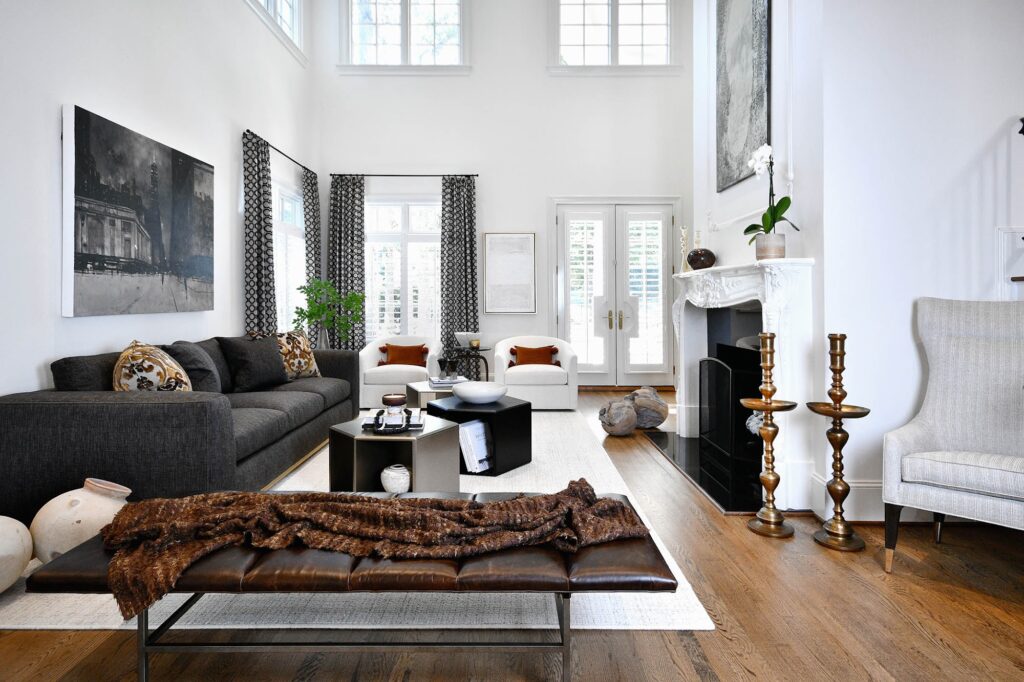
Statement Funiture Pieces
In the orchestration of interior spaces, black statement furniture emerges as a maestro—commanding attention and setting the scene for an ensemble of design elements.
- A black leather Chesterfield sofa beckons with its timeless silhouette and sumptuous comfort, serving as the quintessential focal point for a sophisticated living room.
- Matte black dining chairs around a natural wood table create a striking juxtaposition, blending modern minimalism with rustic warmth.
An ebony grand piano, not just an instrument but a majestic sculpture, dictates an air of elegance and artistic sensibility in a space. - Sleek black armoires offer practical storage solutions while contributing to the room’s aesthetic with their bold, clean lines.
- A sculptural black coffee table in an avant-garde design acts as a centerpiece that intrigues and anchors the living space.
Selecting the right piece will demand you weigh the item’s aesthetic impact and it’s functional harmony within the intended space.
The judicious placement of black furniture can define a room’s ambiance, imbuing it with a sense of luxury and timeless style.
Black in Art Accents
The strategic incorporation of black within art pieces can produce an arresting visual impact, emphasizing the artwork’s emotive power.
- Monochromatic black artworks that command attention and create focal points
- Black-framed mirrors which add depth and elegance to the space
- Ink and charcoal sketches in black that offer a sophisticated touch
- Black sculptures or ceramics that provide a dynamic textural contrast
Use black accents sparingly to ensure each piece carries its weight and significance within the design narrative. The careful curation of black accents can elevate the overall aesthetic, enriching environments with a sense of depth and sophistication.
Contact Room Reimagined Design for Advice Designing with Black
If you’re ready to explore the world of interior design with black as your muse, I invite you to reach out to Room Reimagined Design for assistance. Gina is ready to guide you through the art of infusing sophistication and elegance into your home with the timeless power of black. Together, we’ll unveil the exquisite potential that the color black holds in the realm of your home. Elevate your space, and let’s paint a masterpiece with the art of using the time-transcending color black.

